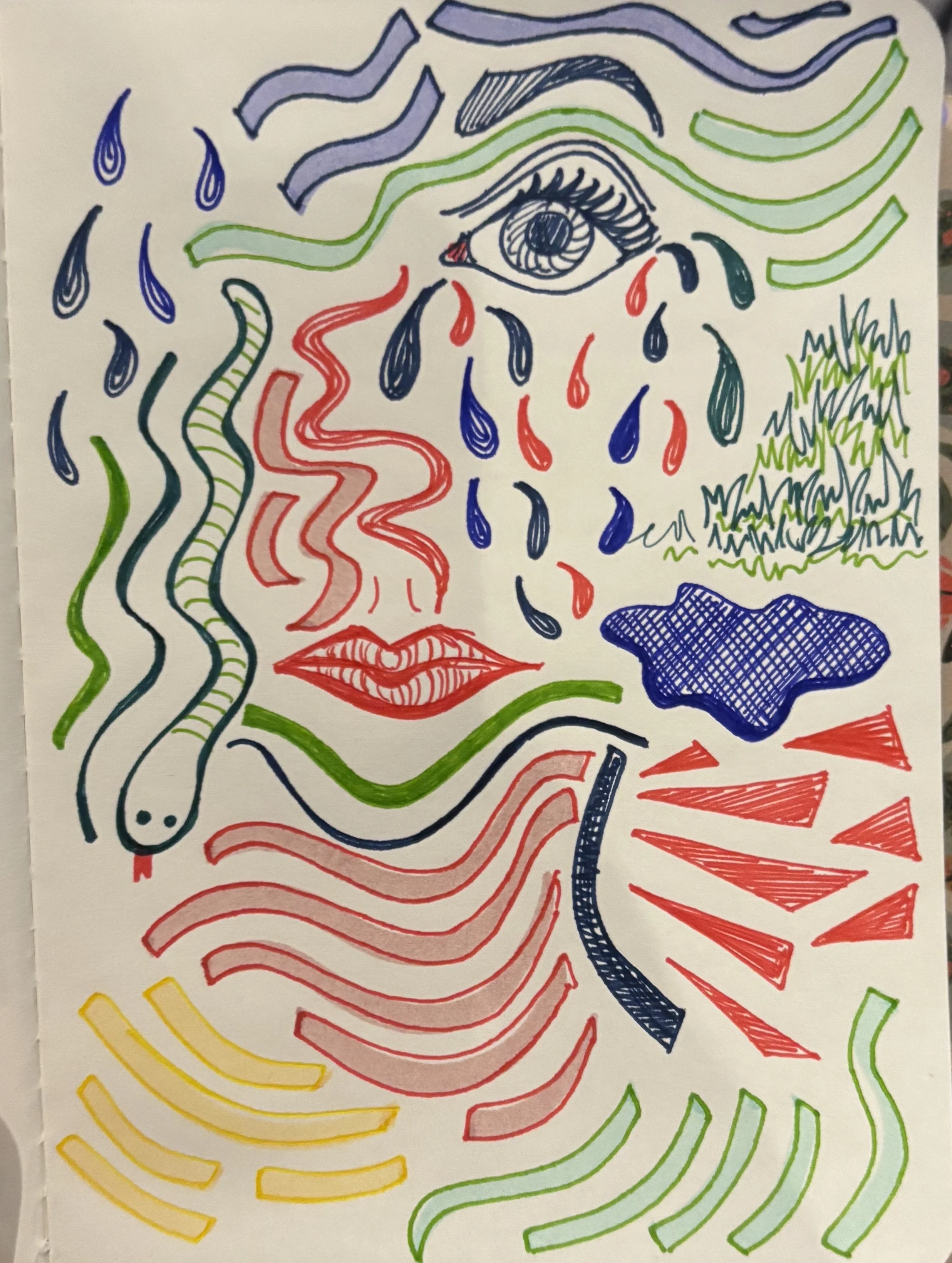Living with Chronic Illness: How Art Therapy Supports Mind-Body Healing
Recently, I attended a continuing education panel focused on art therapists experiencing chronic illnesses. The participants in this session focused on utilizing their own art practice to support coping and create community. This had me thinking, how does art therapy help clients process their own chronic illness experiences and support emotional healing?
As an art therapist who works with many clients with chronic illness, chronic pain, and disabilities, this is at the forefront of my therapy practice. Oftentimes, as people who experience chronic conditions, we have a tendency to be very focused and in-touch with our own bodies. This can be both a blessing and a curse. On one hand, we usually know what we need and when we need it, but on the other hand, it might lead to a level of hypervigilance, anxiety, and further discomfort.
How can art therapy help with chronic illness or pain?
Art therapy can provide a relief and reprieve from the overwhelming sense of focus and fear that can accompany chronic illness and pain. Through incorporating art into therapy sessions, we can create a space for creative expression, emotional and physical release, and even channeling a sense of grounding and calmness when things might not feel so stable or predictable in our bodies.
How do you incorporate art therapy for these benefits?
First and foremost, art therapy can be a great way to process the emotions someone might be experiencing surrounding their illness or pain. There are a lot of feelings that might come up over time, including sadness, anger, grief, frustration, anxiety, depression, etc. It’s rarely just one thing, and these feelings may change over time as we continue to cope with and process a diagnosis or unexplained symptoms. Through creating art, clients can find a way to channel these emotions into visual representations, which may be easier to access and express than words, at times.
In a session, this might look like using various art materials and creating an image describing one emotion or a complex picture of many emotions in one. Another way this could look is creating something informative like a zine (a small, self-published, non-commercial periodical or booklet created by individuals who are not professional writers or artists) to capture the unique experiences of one individual or about a particular diagnosis. One other component of chronic conditions is constant ongoing identity integration, so we might also create some symbolic representation of this concept, perhaps using a mandala technique (a geometric, circular design, often symbolic of the universe) or creating self-portrait imagery.
Art therapy can also be a way to support clients in finding a sense of peace that may not often exist within their body. To create a sense of grounding and calmness through art therapy, we might channel particular imagery that feels resonant to every individual client. This could involve a safe place drawing or painting, representing a real or imagined space that allows the client to feel comforted and safe. Another possibility might be identifying an image of strength-for example, a large, sturdy tree, and then creating that visually through drawing or clay.
Art therapy may also be a way to temporarily minimize pain, as it can be a really helpful distraction through achieving a flow state (a mental state of complete absorption and energized focus in an activity, resulting in a feeling of energized focus, full involvement, and enjoyment). When you’re in flow, you’re focused on the art practice, not as much the hypervigilance or anxiety about physical sensations or symptoms.
So, how can art therapy help me heal from my chronic condition?
Art therapy can be the key to unlocking psychological healing- supporting you with the emotional component of a chronic condition. There is research suggesting that mental health plays a huge role in physical health, and while I won’t guarantee physical changes, you may notice that the psychological changes can be helpful with various components of your chronic illness and pain.
Additionally, the therapeutic relationship itself can be a huge support during healing or chronic flares. As a therapist who has lived experience with chronic illness and pain, I truly get it, and I will be here as a cheerleader, encourager, or soft place to land throughout your journey. We don’t always have that person in our life who really gets it, so creating that through therapy can provide deep relational and emotional healing.
While this is a good overview of how art therapy can help clients with chronic illness, there is so much more to it, and so many more benefits art can provide. If you want to learn more or get started with art therapy, you can schedule a free intro call here: Intro Call.
I work with clients in-person in Baltimore, or virtually throughout Maryland, Colorado, and South Carolina.
Elizabeth Allen, LCPAT, LPC, LGPC, ATR-BC
Creative Pathways Counseling
Artwork reflecting on continuing education panel
